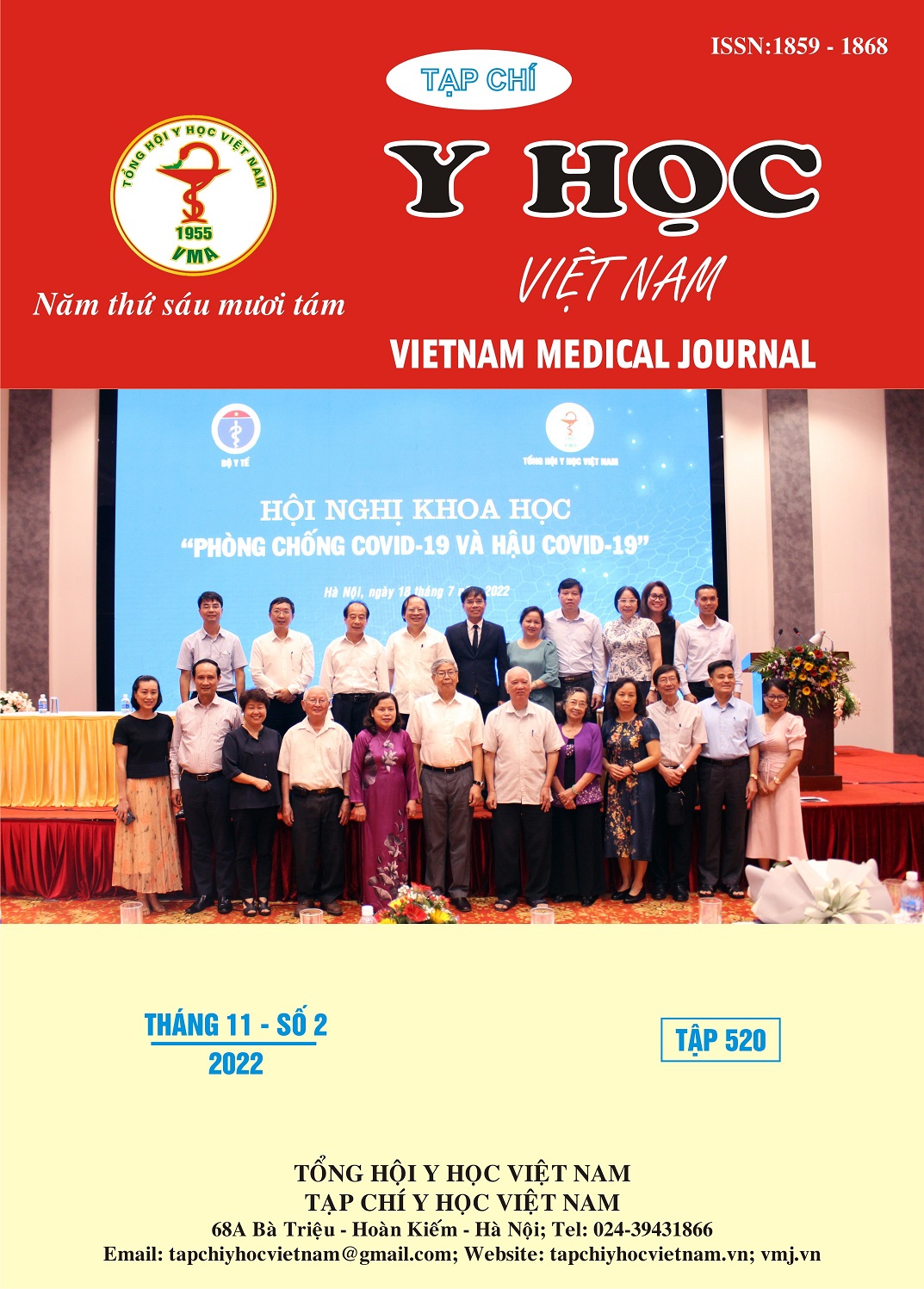MỐI LIÊN QUAN GIỮA ĐA HÌNH GEN FAT MASS AND OBESITY - ASSOCIATED (FTO) RS1121980 VỚI LOÃNG XƯƠNG Ở NAM GIỚI
Nội dung chính của bài viết
Tóm tắt
Các nghiên cứu gần đây chỉ ra rằng đa hình gen FTOrs1121980 làm giảm mật độ xương ở phụ nữ mãn kinh và tăng nguy cơ gãy cổ xương đùi ở đối tượng này, chưa có nghiên cứu trên đối tượng nam giới. Do vậy nghiên cứu của chúng tôi nhằm mục tiêu xác định tính đa hình của gen FTOrs1121980 và mối liên quan của đa hình gen này với loãng xương nam giới. Đối tượng và phương pháp nghiên cứu: Nghiên cứu bệnh chứng tiến hành trên 400 nam giới 50 tuổi trở lên (200 bệnh và 200 chứng) giá trị MĐX được xác định bằng phương pháp đo hấp phụ tia X năng lượng kép, tại vị trí đốt sống L1-L4, cổ xương đùi (CXĐ) và đầu trên xương đùi. Nhóm bệnh được chẩn đoán loãng xương theo tiêu chuẩn của WHO, nhóm chứng là nhóm có mật độ xương bình thường. Xác định kiểu gen FTOrs1121980 bằng phương pháp RFLP-PCR (Rectriction Fragment Length Polymorphism - cắt enzym giới hạn) kiểm định tính chính xác bằng giải trình tự gen 1 số mẫu. Phân tích mối liên quan giữa đa hình gen này với loãng xương nam bằng chỉ số OR. Kết quả: Tần xuất kiểu gen GG/GA/AA của nhóm nghiên cứu lần lượt là: 62%/38%/0% không có sự xuất hiện của kiểu gen đồng hợp tử AA trong 400 đối tượng nghiên cứu. Tỷ lệ alen G và A lần lượt là 81,17 và 12,43% phân bố kiểu gen và alen không tuân theo định luật Hardy-Weinberg. Kiểu gen AG xuất hiện tỷ lệ cao ở nhóm bệnh so với nhóm chứng, sự khác biệt có ý nghĩa thống kê với p <0,05. Kiểu gen GA làm tăng nguy cơ loãng xương cột sống thắt lưng lên gấp 1,99 lần so với kiểu gen GG (95%CI :1,31 - 3,06), sự khác biệt có ý nghĩa thống kê với p<0,005; tương tự alen A làm tăng nguy cơ loãng xương cột sống thắt lưng lên gấp 1,63 lần so với alen G (95%CI: 1,17 – 2,43; p=0,005). Kết luận: Kết quả nghiên cứu của chúng tôi chỉ ra rằng đa hình gen rs1121980 của gen FTO là yếu tố nguy cơ loãng xương cột sống thắt lưng ở nam giới.
Chi tiết bài viết
Từ khóa
MTHFR (Methylenetetrahydrofolate reductase); Đa hình gen; Loãng xương; Mật độ xương; Nam giới
Tài liệu tham khảo
1. Osteoporosis prevention, diagnosis, and therapy. NIH Consens Statement, 2000. 17(1): p. 1-45.
2. Center, J.R., et al., Mortality after all major types of osteoporotic fracture in men and women: an observational study. Lancet, 1999. 353(9156): p. 878-82.
3. Tran, B., et al., Association between fat-mass-and-obesity-associated (FTO) gene and hip fracture susceptibility. Clin Endocrinol (Oxf), 2014. 81(2): p. 210-7.
4. Zhao, X., et al., FTO and obesity: mechanisms of association. Curr Diab Rep, 2014. 14(5): p. 486.
5. Nguyễn Thị Mai Lê, Nghiên cứu kiểu gen của SNP rs112198 0trên gen FTO ở phụ nữ mãn kinh bị bệnh loãng xương. 2017, Luận văn thạc sỹ y học,trường Đại học y Hà Nội.
6. Chen, J., et al., Fat Mass and Obesity-Associated (FTO) Gene Polymorphisms Are Associated with Risk of Intervertebral Disc Degeneration in Chinese Han Population: A Case Control Study. Medical science monitor : international medical journal of experimental and clinical research, 2018. 24: p. 5598-5609.
7. Guo, Y., et al., The Fat Mass and Obesity Associated Gene, FTO, Is Also Associated with Osteoporosis Phenotypes. PLOS ONE, 2011. 6(11): p. e27312.
2. Center, J.R., et al., Mortality after all major types of osteoporotic fracture in men and women: an observational study. Lancet, 1999. 353(9156): p. 878-82.
3. Tran, B., et al., Association between fat-mass-and-obesity-associated (FTO) gene and hip fracture susceptibility. Clin Endocrinol (Oxf), 2014. 81(2): p. 210-7.
4. Zhao, X., et al., FTO and obesity: mechanisms of association. Curr Diab Rep, 2014. 14(5): p. 486.
5. Nguyễn Thị Mai Lê, Nghiên cứu kiểu gen của SNP rs112198 0trên gen FTO ở phụ nữ mãn kinh bị bệnh loãng xương. 2017, Luận văn thạc sỹ y học,trường Đại học y Hà Nội.
6. Chen, J., et al., Fat Mass and Obesity-Associated (FTO) Gene Polymorphisms Are Associated with Risk of Intervertebral Disc Degeneration in Chinese Han Population: A Case Control Study. Medical science monitor : international medical journal of experimental and clinical research, 2018. 24: p. 5598-5609.
7. Guo, Y., et al., The Fat Mass and Obesity Associated Gene, FTO, Is Also Associated with Osteoporosis Phenotypes. PLOS ONE, 2011. 6(11): p. e27312.


